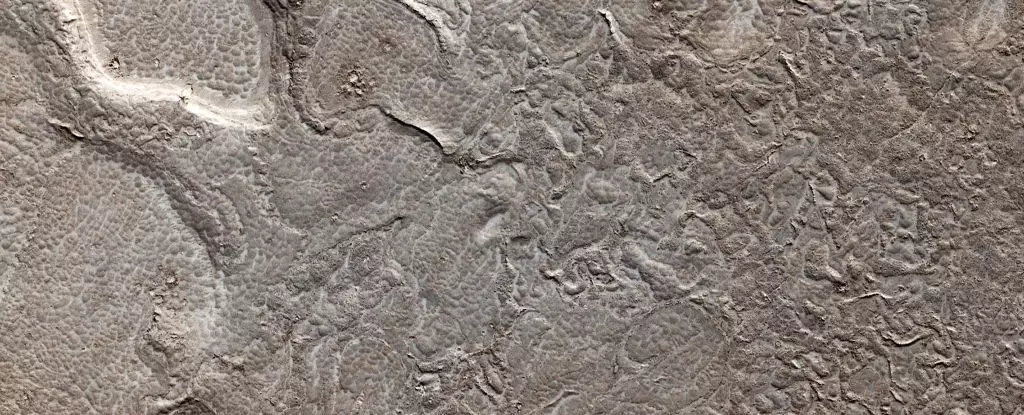While popular culture often portrays Mars as a cold and lifeless planet, recent findings challenge this perception. A comprehensive survey conducted using satellite imagery and ground penetrating radar has uncovered evidence of volcanic activity on Mars that is much more recent than previously understood. These revelations suggest that beneath Mars’ barren surface, there may be a dynamic and active world waiting to be explored. This article delves into the surprising discoveries made through this study and their implications for our understanding of Mars and the potential for life beyond Earth.
The study focused on the Elysium Planitia, a plain on Mars, and examined its volcanic past. Previous assumptions about the region’s volcanic activity were shattered by the new findings, which indicate that volcanic eruptions have occurred within the last 120 million years. Astonishingly, some volcanic activities were estimated to have taken place just a million years ago, a relatively short time span in geological terms. Although no live volcanic activity has been observed, these findings raise the possibility that Mars might still possess active volcanoes, hidden from our view.
The surface of Mars in the Elysium Planitia unveils an intriguing collection of rocks and lava flows. Scientists were particularly astounded by the remarkably young lava flows present on the surface. Moreover, evidence of features carved out by the interaction of lava and ice or liquid water was observed, suggesting the occurrence of steam explosions. On Earth, landscapes combining hot geological activity with water support thriving microbial life, prompting scientists to ponder the potential for similar life forms on Mars. The striking similarities between Martian and terrestrial landscapes have not gone unnoticed.
To gain a comprehensive understanding of the volcanic history of the Elysium Planitia, researchers combined data from various instruments and techniques. Topographic maps were employed to analyze the surface’s shape, satellite imagery aided in studying distinctive features, and ground-penetrating radar enabled density mapping up to 140 meters (460 feet) below the surface. By meticulously examining lava surfaces and untangling different eruption events, researchers could reconstruct the entirety of the region’s geologic history. The utilization of these diverse tools and methods was essential in unraveling the complex volcanic dynamics of Mars.
The survey findings revealed that the Elysium Planitia resulted from more than 40 volcanic events between 120 million and 1 million years ago, some of which were truly monumental. One eruption unleashed a staggering 16,000 cubic kilometers (3,840 cubic miles) of molten basalt, flooding Rahway Valles. Another eruption flooded Marte Vallis with 12,200 cubic kilometers of molten rock, while Athabasca Valles experienced a similar cataclysm with 4,000 cubic kilometers of molten rock. Notably, the vents that allowed the lava to flow may have also released massive floods of groundwater, creating explosive events that shaped the Martian landscape. On Earth, the addition of steam to volcanic activity results in some of the most explosive eruptions.
The findings not only shed light on Mars’ volcanic history but also hint at the possibility of ongoing volcanic activity and the hiding places of water on the planet. Previous studies have suggested that volcanic features in the Elysium Planitia could be as young as 50,000 years old. Additionally, seismic data collected by the Mars InSight lander has revealed considerable earthquake activity, some of which can be traced back to volcanic sources. The combination of these findings suggests that Mars might still be volcanically active today. Furthermore, the presence of young volcanic surfaces and the recent detection of seismic activity in the Elysium Planitia imply the existence of large underground water ice deposits.
The notion of a cold and lifeless Mars has been shattered by the recent survey uncovering evidence of relatively recent volcanic activity on the planet. These findings challenge our previous understanding of Mars and paint a picture of a dynamic and active world that might still harbor surprises waiting to be revealed. By continuing to explore and study Mars, we may one day unravel the mysteries of its volcanic processes, unlock the secrets of its water reservoirs, and potentially even discover evidence of extraterrestrial life. The active and volcanic Mars may hold the keys to understanding our own planet and the possibilities of life beyond Earth.


Leave a Reply